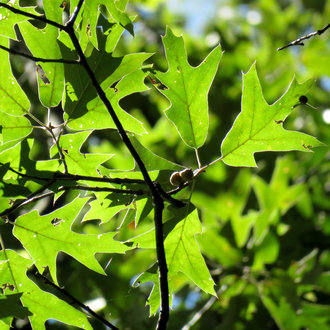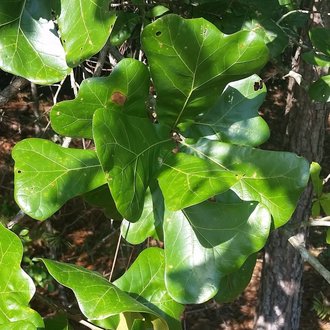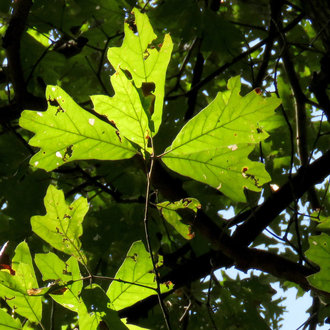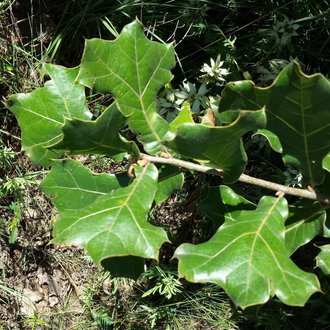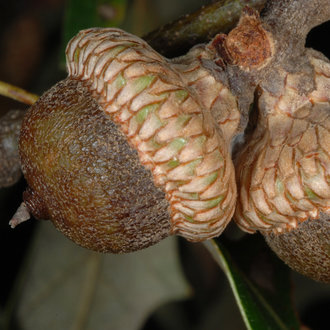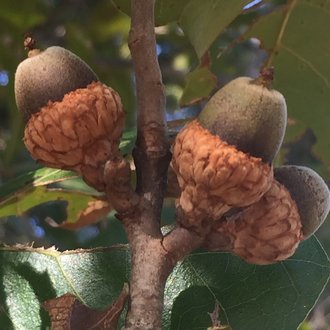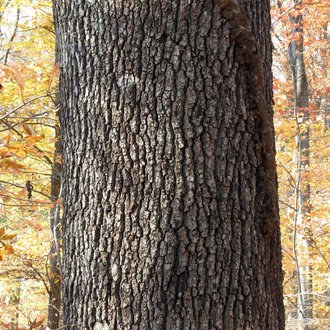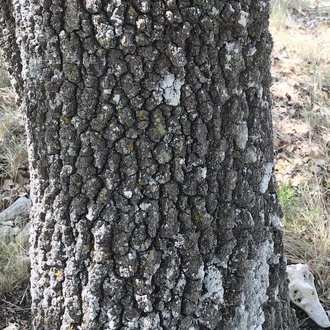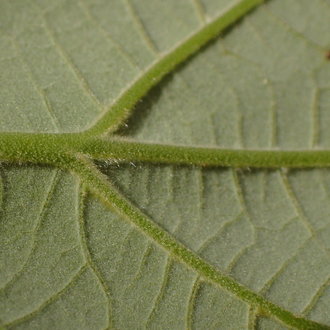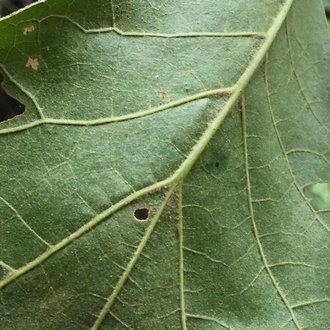Southern Red Oak vs Blackjack Oak
This guide is under construction and has not been published yet. It may have errors. When in doubt, double-check other sources for definitive ID.These species are sometimes confused, especially when young, but usually look distinctive as adults. Blackjack oak averages tougher leaves with fewer lobes. Although their habitats can overlap, blackjack oak prefers drier, sunnier sites.
Southern Red Oak (Quercus falcata) | Blackjack Oak (Quercus marilandica) |
A medium to large red oak with, as the name suggests, a more southerly distribution than the northern red oak (Quercus rubra), although their ranges overlap considerably. | An oak, native to eastern North America, adapted to extreme, nutrient-poor sites that burn regularly. |
Leaves have 3-7 lobes, never flat-across at tip. Photo © Katja Schulz, CC BY 4.0. | Leaves usually at most 3-lobed, sometimes entirely flat-across at tip, very broad at tip. Photo © cwarneke, Public Domain. |
3-lobed leaves narrower at the tip, usually deeper-cut and making acute angles between lobes. Photo © Katja Schulz, CC BY 4.0. | 3-lobed leaves broader at the tip, with shallower notches making wide, obtuse angles between lobes. Photo © Even Dankowicz, CC BY 4.0. |
Nut of acorn more spherical, shorter relative to its width. Acorn cap slightly flatter at base. Photo © Doug Goldman, CC BY 4.0. | Nut of acorn more oblong, longer relative to its width. Acorn cap more tapered at base. Photo © tallpaultheforester, CC BY-SA 4.0. |
Bark averages slightly lighter in color and usually less rugged on trees of similar age. Ridges narrower and more intact in the vertical direction. Photo © Katja Schulz, CC BY 4.0. | Bark nearly black, rugged, with ridges broken into small blocks and deep fissures between them. Photo © Cody Stricker, CC BY 4.0. |
Undersides of leaves soft and felt-like, consistently covered in fine hairs. Photo © Austin Pursley, Public Domain. | Underside of leaves scaly, crusty-granular, or with scattered hairs. Photo © Becky, Public Domain. |
References & External Resources
These short lists show only links helpful for ID. For a complete list of references and resources also covering other aspects of ecology, visit the links section of the full article on each plant, which is the first entry here.



